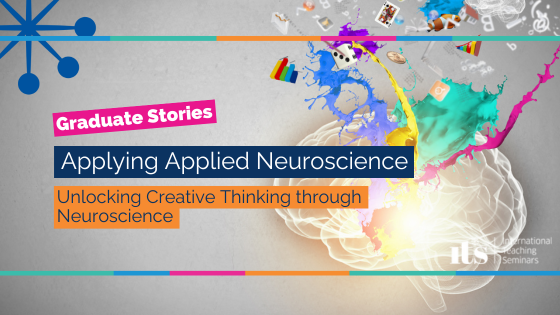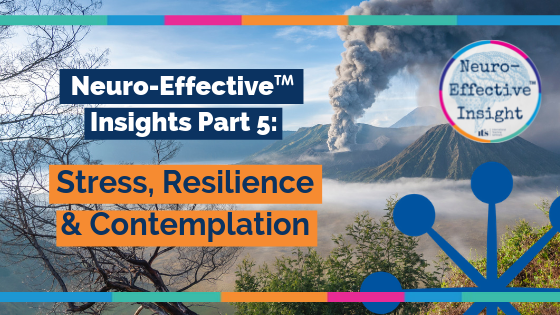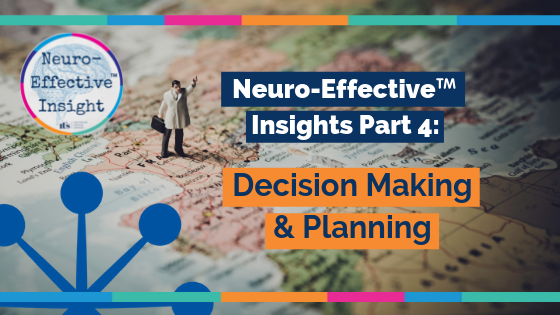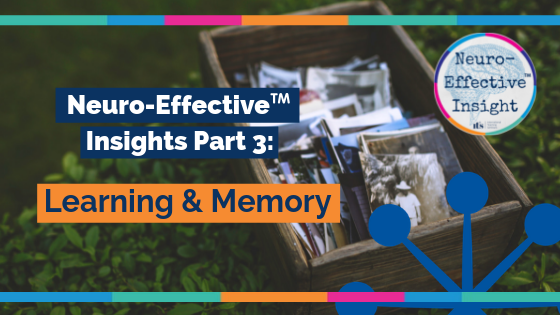Unlocking Creative Thinking through Neuroscience:
Insights from A Graduate’s Journey.
How applying Applied Neuroscience can promote behaviour change for creativity.
The human brain, a marvel of nature, holds immense potential for creativity and innovation, yet often, we find ourselves trapped in the confines of conventional thinking.
In our relentless pursuit of success, the ability to unlock and harness this potential can be the key to redefining our paths, particularly in the challenging world of business.
In this blog we explore how one of our graduates (Andrew*) who is a coach, used their understanding of Applied Neuroscience within a coaching session to help their client break free from traditional molds.
Join us as we explore the intricate dance between the human brain and creativity, and how understanding this relationship can lead to transformative business strategies.
Read more about Andrew’s story below.
Understanding the Challenge
The client, a quick thinker, faced the challenge of systematising her creativity to develop a sustainable business model.
She initially believed that a physical change in her workspace, like a new desk or chair, would suffice to boost her creativity. However, Andrew identified a deeper issue – her approach and mindset to creativity. Which appeared to be constrained by tight associations and a highly focused attention span, limiting her ability to think diversely about her business.
Aim of the Intervention
The goal was to help the client enhance her creative thinking and expand her conceptual understanding of her business.
Andrew aimed to foster an environment where the client felt psychologically safe to be creatively expressive without fear of failure. This involved shifting the brain’s focus from threat responses (amygdala) to reward responses (ventral striatum).
Method Used
Andrew’s intervention focused on two main areas: divergent thinking and the neuroscience of creativity.
He engaged his client in exercises designed to expand her conceptual thinking and inhibit habitual responses, activating the Default Mode Network (DMN) and the Cognitive Control Network (CCN). This approach helped the client see her business in a new light and generated more diverse ideas.
One key exercise involved brainstorming multiple uses for a single object, which challenged her to think beyond conventional associations.
Additionally, Andrew addressed the client’s self-critical tendencies, encouraging a shift towards self-compassion to create a more positive emotional state conducive to creative thinking.
Applying Applied Neuroscience
Putting theory into practice, Mary began reviewing her to-do list with an intrinsic mindset.
This new approach brought a noticeable change in her feelings and she reported feeling more in control and autonomous, experiencing a surge in positive emotions and an increase in approach behaviors, facilitated by the activation of the left medial PFC.
Key Learnings
- Environmental and Emotional Factors: The client realised that her environment and emotional state significantly influenced her creativity. She found that a bean bag chair by a window, evoking a sense of comfort, and a practice of self-compassion were crucial in fostering a conducive creative space.
- Balancing Creative Networks: By engaging in household chores, the client discovered the benefits of passive creativity and incubation. These activities allowed her to defocus and activate the Salience Network (SN), facilitating a switch between the DMN and CCN for insight generation.
- Conceptual Expansion and Inhibition: The process highlighted the importance of expanding her concept of business and inhibiting fixed responses. This approach allowed the client to generate novel ideas and view her business model from different perspectives.
- Preparing for Creativity: Andrew learned that creativity can be scientifically prepared and enhanced. Techniques like conceptual expansion and inhibiting habitual responses are not only effective but also learnable skills that can transform one’s approach to problem-solving.
In Conclusion: Applying Applied Neuroscience for Creativity
Andrew’s coaching case underscores the transformative power of Applied Neuroscience in enhancing creativity in professional settings.
By understanding and applying principles of brain function, he successfully guided his client to expand her creative thinking, leading to a more innovative and sustainable business model.
This case serves as an inspiring example of how Applied Neuroscience can be practically applied to foster creativity and innovation in everyday professional challenges.
If you want to learn more about Applying Applied Neuroscience for Creativity and to develop your own intervention to promote behaviour change, then see more information about our programme here >
*Andrew is used as a pseudonym.





Leave A Comment